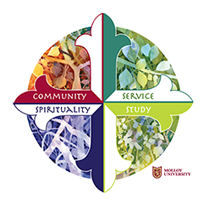Publication Date
11-2023
Document Type
Article
Abstract
Purpose: To identify how speech-language pathologists (SLPs) in the UnitedStates are screening for and identifying dysphagia. To do this, we examined theapproaches most often used to screen for dysphagia and the influence of contex-tual factors such as setting, continuing education and means of staying up to datewith the most current literature on screening approaches.Method: A web-based survey composed of 32 questions was developed andfield tested for content, relevance and workflow. The survey was distributedonline, via social media, online SLP forums and through the American Speech-Language-Hearing Association’s Special Interest Group 13 (swallowing disor-ders). One hundred and thirty-seven clinicians from the United States completedthe survey and were included for analysis using descriptive statistics and linearregression modelling to assess associations of continuing education and yearspracticing with screening protocols and consumption of evidence.Results: Respondents worked in a variety of settings, including acute care,skilled nursing facilities, and inpatient rehabilitation. Most respondents workedwith adult populations (88%). The most common screening protocols reportedwere a volume-dependent water swallow test (74%), subjective patient report(66%), and trials of solids/liquids (49%). Twenty-four percent (24%) reportedusing a questionnaire, the Eating Assessment Tool (80%) being most common.How clinicians consume their evidence was significantly associated with thetypes of screening approaches used. Continuing education hours were signifi-cantly associated with dysphagia screening protocol choice (p < 0.001) and howclinicians stayed up to date with evidence (p < 0.001).Conclusions: Results from this study provide an in-depth look at the choicesclinicians are making in the field regarding how to effectively screen patientsfor the presence of dysphagia. Contextual factors such as evidence base con-sumption patterns should serve researchers to continue seeking alternative waysto share evidence with clinicians, accessibly.
DOI
10.1111/1460-6984.12921
Page Range
2062-2076
Journal Title
International Journal of Language & Communication Disorders
Volume (Issue)
58 (6)
Journal ISSN
1460-6984
Recommended Citation
Dumican, Matthew; Thijs, Zoë Ph.D.; and Harper, Kaitlynn, "Clinical practice patterns of speech-language pathologists for screening and identifying dysphagia" (2023). Communication Sciences and Disorders: Faculty Publications. 3.
https://digitalcommons.molloy.edu/csd_facpub/3
Document Version
Publisher's PDF
Publisher's Statement
© 2023 The Authors. International Journal of Language & Communication Disorders published by John Wiley & Sons Ltd on behalf of Royal College of Speech and LanguageTherapists.
Creative Commons License

This work is licensed under a Creative Commons Attribution-NonCommercial-No Derivative Works 4.0 International License.



